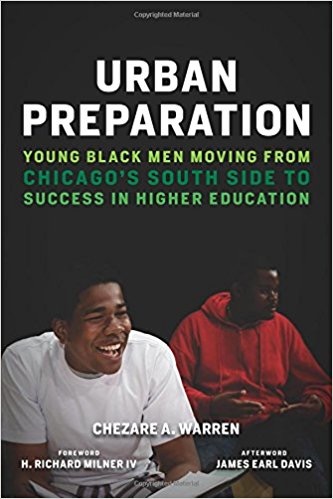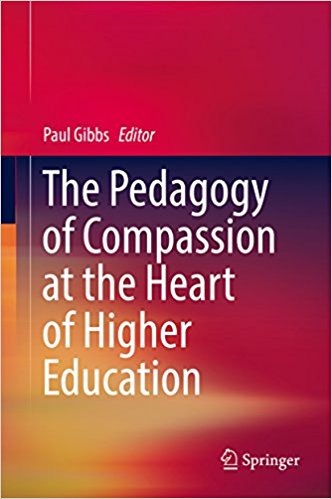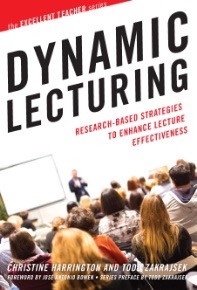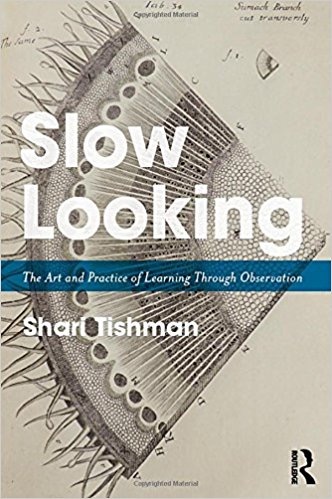pedagogy
Select an item by clicking its checkbox

Urban Preparation: Young Black Men Moving from Chicago's South Side to Success in Higher Education (Race and Education)
Date Reviewed: July 20, 2018
Urban Preparation contributes to a needed body of research on race that investigates “mechanisms, systems, structures, and practices that have a real bearing on students’ opportunities to learn” (vii). Urban Preparation highlights the scholarship of leading researchers who address questions related to race, poverty, achievement gaps, and the academic performance of minority students. An underlying thesis of Urban Preparation is that students in general, and minority students in particular, succeed when appropriate measures are in place. This is a resource for scholars in a variety of disciplines, including but not limited to: education, law, sociology, psychology, health, political science, and social work.
The book begins with an overview of the Race and Education series at Harvard Education Press. The series editor, H. Richard Milner IV, lists several objectives that guide the series and he challenges those in power to work “for the good of humanity, to interrupt systems, policies, and practices that work only for some while others remain underserved” (ix). Reasons are given for focusing on the intersection of race and education and questions are asked related to poverty, transportation, housing, and employment, among others.
In the Introduction, Chezare Warren explains why he wrote Urban Preparation: “to subvert dominant narratives that insist on casting urban-dwelling young, black men and boys as ‘at-risk’ or ‘disadvantaged’” (1). He shares the stories of these young people as counter-stories that portray them as hyper-vulnerable. He is also convinced that social inequities and stories of failure must be examined alongside counter-stories of resilience, persistence, accomplishment, and triumph. The book highlights the stories of seventeen young black men who are members of the inaugural graduating class of Urban Prep Charter Academy for Young Men, referred to as “UP.” UP is a high school for boys in the Englewood neighborhood which has one of the lowest median household incomes among Chicago’s Southside neighborhoods. However, UP is widely recognized for 100 percent of its graduating class gaining admission to four-year colleges and universities.
Urban Preparation aims to: (1) describe the organizational design of UP; (2) examine the intersections of place and space to discern factors that motivate young black men to succeed against the odds; and (3) explore the factors that help narrow “opportunity gaps” for urban youth, and the implications of these factors (3). The book’s qualitative data consists of interviews, field notes, memos, and participants’ responses in order to construct a “coherent continuous narrative around dominant themes” that emerged from analyzing data (8). From the data, Warren chronicles the real-life experiences of the first graduating class by grouping the students into five composite characters with overlapping characteristics.
The title of the book is derived from the school’s name but the book tells the stories of the seventeen students and “the meaning associated with growing up in an urban environment” (18). More than anything else, the book gives a better understanding of the academic and cultural strengths of urban minority youth in secondary and postsecondary settings. Urban Preparation is fundamentally a counter story as well as a critical study that challenges educators and all those interested in improving the education outcomes of black men and boys to listen to them and to learn from them.

The Pedagogy of Compassion at the Heart of Higher Education
Date Reviewed: July 18, 2018
In the opening chapter of his edited volume The Pedagogy of Compassion at the Heart of Higher Education, Paul Gibbs succinctly locates this collection of essays and the topic itself within the current environment of higher education in a way that will be familiar to many: “Given that the consumer model seems to resonate with the context of the majority of higher education institutions, what place do the virtues of humanity and spirituality have in a product-driven consumer service business model of higher education?” (9). It’s a question often asked, and it is one this volume addresses from a wide variety of angles and perspectives. The answer, from adding the sum of the essays here, is that humanity, spirituality, and other qualities of compassion can be observed, practiced, and cultivated in most if not all places within higher education. The variety of topics and perspectives in this volume provide detailed descriptions, arguments, and inspiration for just how such a pedagogy has been prevalent in the history of higher education, and how it can be integrated more into higher education today.
Gibbs is mindful to be as expansive as possible in the perspectives he includes, and the book does include authors from the U.K., the U.S., Canada, Hong Kong, and Europe, with voices ranging from senior academics to students. This range demonstrates Gibbs’s point that the book “is neither overtly spiritual nor secular or agnostic” (11).
For instance, Richard White’s entry traces compassion through Western and Eastern philosophy, and in doing so provides practical ideas to create a compassionate classroom. Kathryn Waddington focuses on “self-compassion, which involves self-kindness, a sense of common humanity, and mindfulness” (66). Self-compassion, Waddington shows, can influence a change in behavior and understanding at individual, group, and organizational levels.
Gibbs is conscious of the structure and organization of this essay collection, and the essays flow well in conversation with each other. This element of the book makes for a very engaging read, and one that further encourages the links between multiple perspectives on compassion in higher education. Following the chapter on self-compassion, Irena Papadopoulos writes on intellectual compassion as a way of cultivating world citizenship, connecting the concepts of interconnectedness of social reality as stemming from twentieth-century philosophers Martin Buber and Emmanuel Levinas. From there, the discussion flows to the relation of compassion within the liberal arts, within Buddhism and Islam, and the transformative power of compassion within South Africa’s anti-apartheid movement. There is also a series of essays focusing on compassion in an institutional way.
In The Pedagogy of Compassion at the Heart of Higher Education, Gibbs collects diverse ideas about compassion in higher education. This volume can serve as a guide, for individuals and institutions alike, for an engaging historical and topical conversation on the wide-ranging ways to integrate ideas of spirituality and humanity into realms that have increasingly come to seem consumerist.

Dynamic Lecturing: Research-Based Strategies to Enhance Lecture Effectiveness
Date Reviewed: July 18, 2018
Against the prevailing tide in higher education, Christine Harrington and Todd Zakrajsek argue that lectures, when prepared well and incorporated appropriately, are one of the most effective ways to enhance learning. The first part of their book is focused on making this case and on delineating the different forms a lecture can take. The second part of the book focuses on ways to make lectures more effective for learners. That second part takes up the bulk of the book (7 of the 11 chapters). The third part provides tools and resources for preparing and evaluating lectures. These final two chapters give helpful rubrics, charts, and questionnaires that can easily be adapted for one’s own lectures or for evaluating others’ lectures. This book would be a useful addition to an individual professor’s library and, most especially, to a center for teaching and learning library.
Both authors of Dynamic Lecturing are trained in psychology and have experience in teaching and learning and faculty development centers, so the examples are often from social science or natural science classrooms. However, many of their suggestions could easily be adapted to theology and religious studies. Using research from the scholarship of teaching and learning, they argue that lectures are efficient and effective for novice learners but are less so for expert learners (by which they mean advanced undergraduates and graduate students). This book, therefore, would be most useful for faculty who frequently teach lower-division courses for undergraduates; it could still be quite useful for those wanting to make their lectures more effective, even if they work with other learner populations and use other kinds of teaching tools.
This distinction between novice and expert learners is significant in the context of theology and religious studies: in certain courses, students may enter the classroom assuming they are the experts (for example, if the course focuses on their own religious tradition, especially if the professor is not another “insider”). Harrington and Zakrajsek’s discussion of techniques like pre-testing may be a way to address this unique dynamic: if a student took a pre-test and found that they did not know as much as they thought they knew, they might find themselves more open to learning from a professor’s lecture.
As their title suggests, this is not a book about individual teaching choices, but rather is focused on research-based strategies: nearly every paragraph has multiple citations that refer the reader to studies done on teaching and learning. A bibliography accompanies each chapter, so references are easy to track down, if desired. The studies are often explained well, so the reader knows what the research suggests; there are times, however, when the conclusions seem overstated. For example, a study used to argue that lectures are more helpful than active learning sessions to novice learners is explained in a parenthetical note: 88% of students agreed or strongly agreed that a lecture helped them learn course content compared with 49% of students who agreed or strongly agreed that active learning sessions helped them learn course content (10). Self-reporting is not the same as demonstrating mastery of the content. In other places, the authors note that students are not always the best judges of their own learning (see, for example, studies on learners’ overconfidence [115]). The research cited throughout the book is not limited to self-reporting and includes very helpful data on what promotes student engagement and learning.

Slow Looking: The Art and Practice of Learning Through Observation
Date Reviewed: July 18, 2018
“The definition of slow looking is straightforward,” writes Shari Tishman, “It simply means taking the time to carefully observe more than meets the eye at first glance" (2). Imagine taking students to an art museum and focusing on just one painting. You would be taking the time to support your students in looking, really looking at art. Can they list everything they see in the painting? Could they identify twice as many items if you gave them more time still? Does the painting look different if they move closer or change their angle? Are there interesting juxtapositions of objects, shapes, or colors within the painting? These questions are natural to slow looking. It is a rewarding classroom practice and an indispensable aspect of method in theological and religious studies.
This book was written “with educators in mind” and it contains many practical ideas on how to use slow looking in the classroom. Examples range across disciplines: Virginia Woolf’s observations concerning “The Mark on the Wall,” zoological sketches of a caracal cat, and the mechanical intricacies of an old-fashioned office stapler, among others. Drawing on previous research, Tishman examines three dispositional tendencies involved in slow looking: ability, inclination, and sensitivity (145). Sensitivity is particularly critical; this is the capacity to employ slow looking in the appropriate context. As educators in the humanities seek to more clearly articulate the lasting benefits of our work, this careful examination of slow looking as an important lifelong skill is timely.
The beauty of this title is its ability to focus on the benefits of slow looking as educational practice in a deep way. Many excellent books on pedagogy adopt a wide scope. They pull their lens back and look at course planning or broad curricular systems. Slow Looking has much to offer courses and curriculum, but Tishman is adept at returning continually to the exercise of slow looking to reveal its complexity and practical efficacy from different vantage points. According to Tishman, slow looking is a “learned capacity” foundational to critical thinking (7). Foundational, yes, but it should not be thought of as synonymous with critical thinking or be conceptually absorbed by critical thinking. Slow looking is its own discrete process. Tishman explains, “Slow looking is not primarily judgment oriented, though its fruits certainly inform good judgments. Rather, slow looking emphasizes deferring judgment in favor of apprehending the complexity of how things are at the moment” (149). There are three types of complexity: complexity of parts and interactions (anatomy, for example), perspective (different physical or conceptual vantage points), and engagement (interplay between perceiver and perceived). Teachers will already see how parsing complexity in this way can lead to extended classroom reflection on a given subject of observation and the process of looking itself.
Slow Looking strikes the perfect balance between practicality and philosophical depth. Tishman writes fluidly and moves easily among descriptions of classroom technique, phenomenological analysis of observation, and the intellectual history of student-centered education. Slow Looking will be a continual source of inspiration in my own teaching and scholarship – it is highly recommended.
Exposing and disrupting the values which perpetuate white normativity puts a strain on the adult classroom. Individualism is a cornerstone value of whiteness and patriarchy. As persons committed to the flimsy lie of pulling oneself up by the bootstraps, too many students believe that education is best attempted alone. Conforming ...
